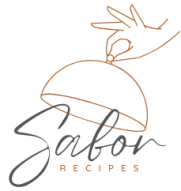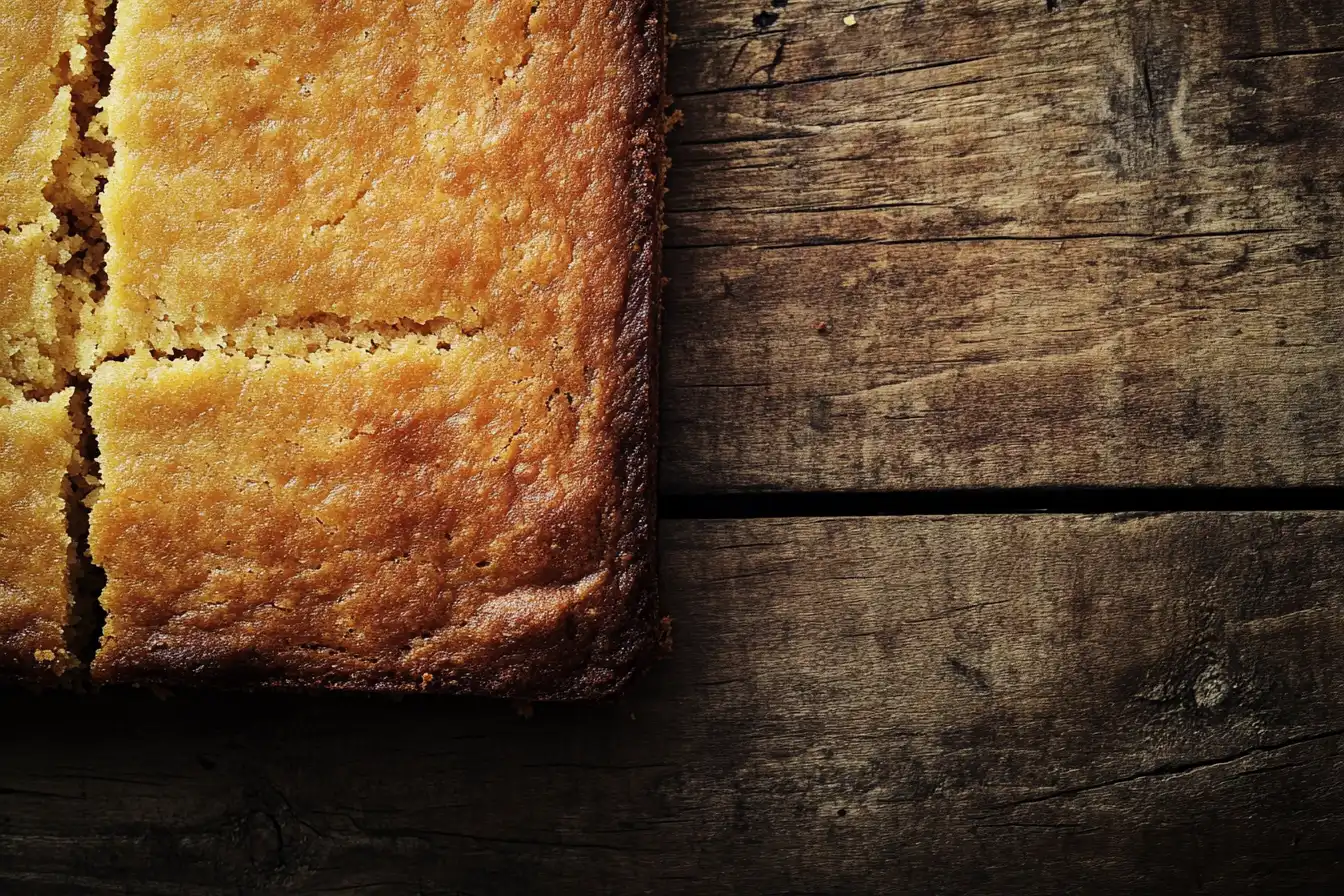Did cornbread come from Mexico? This article explores the origins of this popular food, examining its history and its possible links to ancient civilizations. We will also delve into how cornbread developed into what we know and enjoy today.
The Intriguing Question: Did Cornbread Come From Mexico?
The question, “did cornbread come from Mexico?” is indeed intriguing. Many believe this staple food has roots in the Americas. Understanding the history of corn, a key ingredient in cornbread, provides us with important clues. Let’s explore the journey of cornbread and its potential links to Mexico.
The Ancient Origins of Corn, A Key to Cornbread’s Past
Corn, also known as maize, is central to the story of cornbread. Corn was first domesticated in Mexico thousands of years ago. Indeed, this process began roughly 9,000 years ago. Accordingly, ancient Mesoamerican cultures relied heavily on corn. Corn became a core part of their diet. Consequently, they developed various ways to use it, including grinding it into flour. This corn flour is, of course, the base of cornbread.
Early Corn Preparation Techniques and Cornbread Beginnings
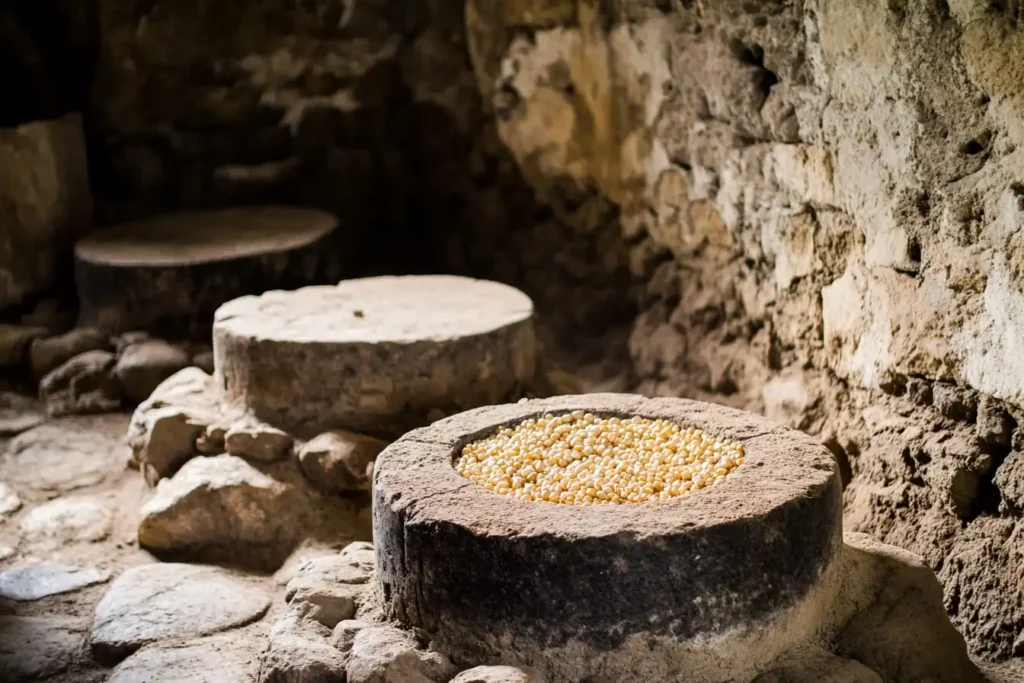
The early methods of preparing corn were simple, yet effective. For example, ancient people ground corn using stones. After that, they would mix the corn flour with water to create a dough. This dough could then be cooked on hot stones or in clay ovens. Therefore, these techniques likely laid the early groundwork for later cornbread recipes. Subsequently, different cultures adapted these techniques to create their own versions of cornbread. These techniques are essential to the discussion of where cornbread came from.
Exploring Cornbread in Mesoamerica: The Foundation
Did cornbread come from Mexico? To address this, we must examine the food culture of Mesoamerica. Many believe ancient civilizations in this region, like the Aztecs and Mayans, influenced the development of cornbread. They used corn in many ways, including creating flatbreads and cakes similar to cornbread. Therefore, exploring this is essential for answering the question of the origin of cornbread.
The Aztec Connection to Cornbread: A Possible Link
The Aztecs were skilled agriculturalists. Additionally, they developed sophisticated ways to cultivate corn. They used corn in many forms. Including a kind of corn cake called “tlaxcalli.” This was a flat corn cake cooked on a hot stone, similar to a tortilla. However, it’s not the same as the cornbread we know today. Nonetheless, it demonstrates their knowledge of corn preparation. Conversely, the Aztecs didn’t use leavening agents, like baking soda or baking powder, essential in our cornbread recipes. Thus, while similar, it’s not the cornbread we know.
Mayan Corn-Based Dishes and Their Relevance to Cornbread
The Mayans also relied heavily on corn. Similarly to the Aztecs, they created numerous corn-based dishes. For example, they had a variety of corn porridges and flatbreads. Their cooking methods involved grinding corn, mixing it with water, and cooking the resulting dough. Therefore, while these dishes were not exactly cornbread, they show their extensive knowledge of corn and its uses, contributing to the story of cornbread. Indeed, these preparations were a stepping stone to the cornbread we know.
Differences Between Mesoamerican Corn Dishes and Modern Cornbread
While Mesoamerican civilizations had numerous corn-based dishes, they differ from modern cornbread. For example, these ancient preparations often didn’t use leavening agents. In addition, the texture and consistency of the end products were different from what we usually consider cornbread. Thus, there isn’t a direct line from these items to modern cornbread. Nonetheless, these early corn preparations provided the base for the later development of cornbread. Accordingly, they are part of the history of cornbread.
Cornbread’s Evolution in North America: A Transformation
While the roots of corn are in Mexico, the cornbread we know has gone through significant transformations. Basically, the modern version of cornbread developed primarily in North America, especially in the Southern United States. Let’s examine the evolution of cornbread in the US and how it became the cornbread we enjoy today.
The Role of Native American Tribes in Cornbread’s Development
Native American tribes played a vital role in the development of cornbread. They had their own corn recipes. These were adapted to their traditional cooking methods. Many tribes cultivated corn. They used it to create flatbreads and other dishes. These methods often included grinding corn on stones and baking the dough over fire or in hearths. Consequently, they laid vital groundwork for future cornbread recipes. Thus, their contribution to cornbread is undeniable.
European Influence on Cornbread: Adding New Elements
When European settlers arrived in North America, they encountered corn. They learned how to use it from the Native Americans. The Europeans adapted the existing corn recipes. Furthermore, they introduced new cooking methods and ingredients, such as baking powder and baking soda. This combination of Native American knowledge and European practices ultimately led to the development of modern cornbread. Indeed, the cornbread we know today is a result of their influence.
Cornbread in the Southern United States: A Staple is Born
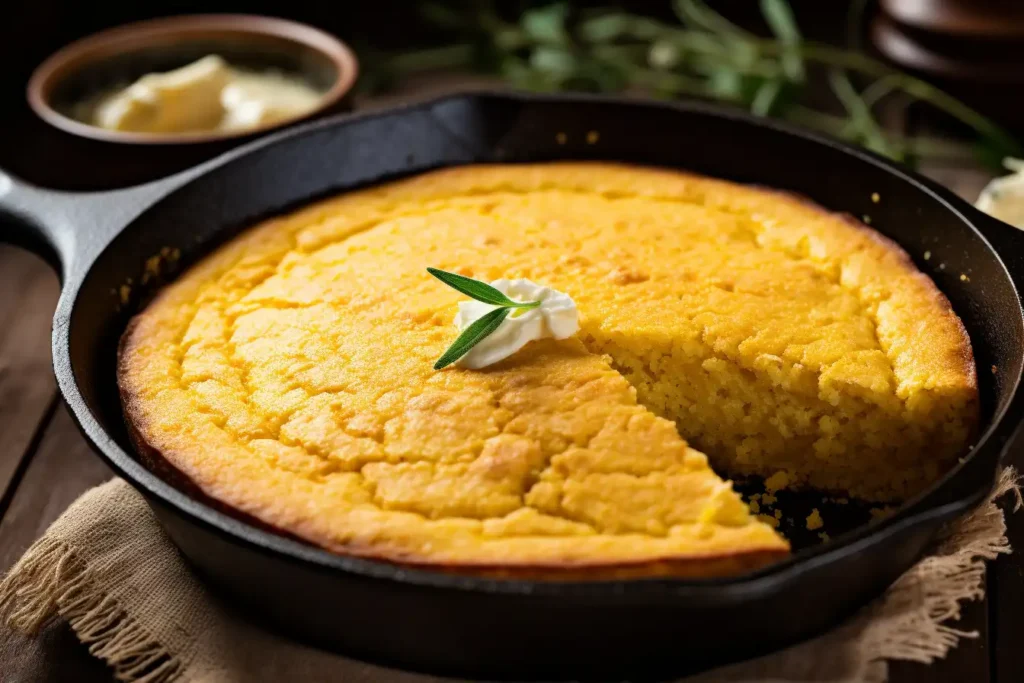
Cornbread became a staple food in the Southern United States. Particularly, it was a popular and satisfying dish for many, due to the wide availability of corn. It was generally an inexpensive food. It was a part of daily life, especially in poorer communities. Cornbread recipes varied by region and family. Therefore, each family developed its special version of cornbread, contributing to its rich history. Cornbread in the South is a significant cultural marker.
Cornbread Today: A Beloved Food Across the Nation
Today, cornbread remains a much-loved food. Specifically, it is found on tables across the United States. Moreover, it has numerous variations, such as sweet cornbread and savory cornbread. In addition, it’s a popular side dish with countless meals. Thus, cornbread holds a prominent place in American food culture. Cornbread’s journey highlights its adaptability and staying power.
Exploring Different Types of Cornbread: Variety in the Mix
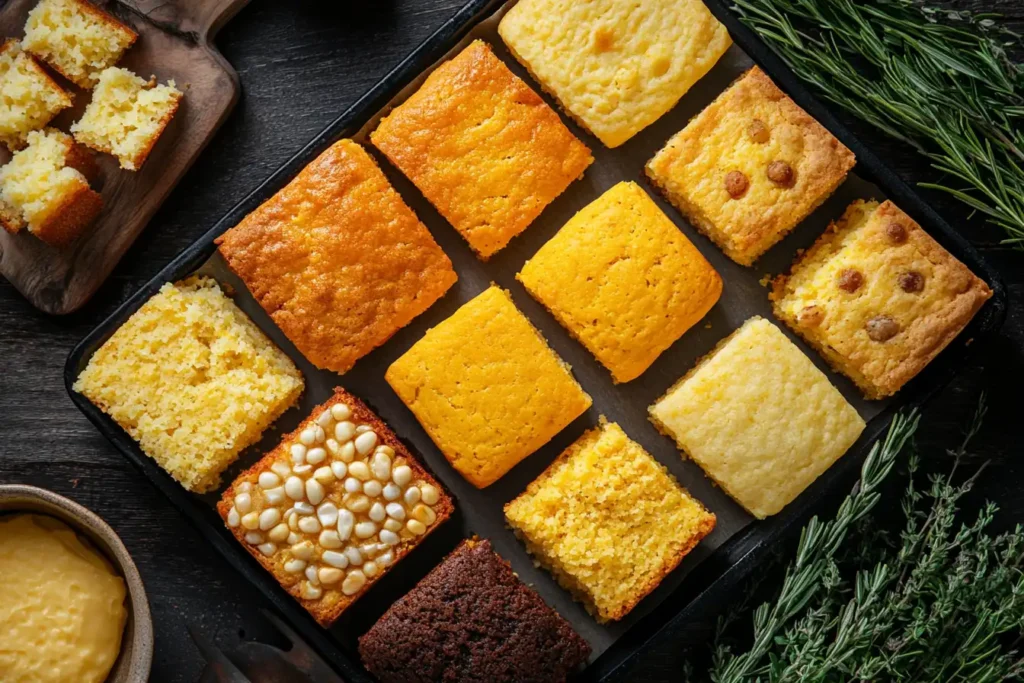
There are different kinds of cornbread, each with their own unique characteristics. These variations can differ in their ingredients, flavor, and texture. Exploring the varieties helps appreciate the versatility of cornbread. Let’s examine the most common forms of cornbread.
Traditional Southern Cornbread: The Classic
Traditional Southern cornbread is typically made with corn flour or cornmeal. Water or milk, some fat, like butter or oil, and salt are also used. Furthermore, baking powder or baking soda are used as leavening agents. Southern cornbread is usually not sweet. Accordingly, it often has a coarse texture. Often, it’s cooked in a cast iron skillet for a crispy crust, a key characteristic of this style of cornbread.
Sweet Cornbread: A Dessert-Like Treat
Sweet cornbread is a popular variation, particularly enjoyed as a dessert. It includes added sugar or sweeteners, such as honey or molasses. Sweet cornbread is often used as a dessert or treat, showcasing the adaptability of cornbread. Undoubtedly, its softer texture and sweeter flavor set it apart from traditional cornbread. Thus, it’s a delightful alternative to the classic.
Cornbread Variations Across the United States: Regional Differences
Across the United States, you’ll find many regional cornbread variations. For instance, some cornbread recipes include cheese, while others add herbs or spices. Another common variation uses buttermilk for a richer and tangier flavor. Thus, there’s a great variety in the different types of cornbread. Indeed, exploring these variations is a culinary adventure.
Global Cornbread Adaptations: A Worldwide Phenomenon
While cornbread is primarily an American dish, it has been adapted in other parts of the world. For instance, some countries have created their unique variations using local ingredients. Therefore, cornbread, as a concept, has been changed by different cultures. Indeed, it has been influenced by other culinary traditions. Thus, cornbread’s influence stretches across the globe.
Understanding the Ingredients of Cornbread: The Building Blocks
The key ingredients of cornbread are simple, yet they play important roles. Understanding these ingredients is essential to grasping the process of cornbread baking. Specifically, how these ingredients are used impacts the final product. Let’s explore the key components.
Corn Flour/Cornmeal: The Heart of Cornbread
Corn flour or cornmeal is, chiefly, the most important ingredient in cornbread. These are made from dried corn kernels that have been ground. The texture can vary from fine to coarse. This ingredient affects the ultimate texture of the cornbread. Thus, the corn itself is the base of any cornbread recipe.
Leavening Agents: The Rise of Cornbread
Baking powder or baking soda are essential leavening agents in cornbread. These ingredients create air bubbles in the dough. They make the cornbread rise and become fluffy. Therefore, they are crucial for texture. Generally, both are used to achieve a light and airy result. Indeed, without them, cornbread would be dense.
Liquid Components: Binding the Ingredients
Water or milk are necessary to bind the corn flour or cornmeal. In addition, liquids give the dough the right consistency. Generally, buttermilk can be used to give a tangy flavor and a tender texture to cornbread. Thus, the right liquid balance is key to good cornbread.
Fats and Sweeteners: Adding Moisture and Flavor
Fats such as butter, oil, or shortening are used to add moisture to cornbread. Meanwhile, sweeteners like sugar, honey, or molasses can be added, depending on the variation. These ingredients influence both the overall flavor and texture. Consequently, they’re an important part of cornbread. Indeed, they are often where recipes differ most.
How to Make Classic Cornbread: A Step-by-Step Guide
Making classic cornbread is relatively easy. But it requires attention to the process. Following these steps will ensure a delicious cornbread every time. Let’s walk through the process.
Step-by-Step Recipe for Perfect Cornbread
- First, preheat your oven to 400°F (200°C).
- Second, grease a cast iron skillet or baking pan.
- Third, in a large bowl, mix the corn flour or cornmeal, leavening agents, and salt.
- Fourth, add the liquid components and melted butter or oil.
- Fifth, mix well until just combined. Do not overmix.
- Sixth, pour the batter into the prepared skillet.
- Finally, bake for 20-25 minutes or until golden brown.
Tips for Perfect Cornbread Every Time
- Indeed, do not overmix the batter. Overmixing can make cornbread tough.
- Also, use fresh ingredients for the best flavor.
- Moreover, bake the cornbread until golden brown and cooked through.
- Furthermore, you can customize the flavor by adding herbs or other ingredients.
- Finally, serve warm with butter or your preferred toppings. Thus, a simple dish that can be easily customized.
Serving Suggestions for Cornbread
Cornbread can be served as a side dish with chili, stews, or BBQ. In addition, it’s an excellent pairing with butter and honey. Also, it compliments many other dishes. Generally, it is highly compatible with numerous food items. Thus, it’s a versatile addition to many meals.
Cornbread and Cultural Significance: More Than Just a Food
Cornbread is more than just a food. It also carries significant cultural weight. Indeed, it’s deeply woven into the fabric of many communities. Furthermore, it reflects historical events and traditions, helping to shape cultural narratives.
Cornbread in African American Culture: A Symbol of Resilience
Cornbread holds a special place in African American culture. It became a staple during slavery. Afterward, it remained important because of its low cost and versatility. Moreover, cornbread is a key element in soul food traditions. Specifically, it is often served with collard greens, fried chicken, and other classic dishes. Thus, cornbread represents resilience and heritage. Indeed, it has deep historical and cultural roots.
Cornbread in Southern Cuisine: A Regional Icon
Cornbread is undoubtedly a defining aspect of Southern cuisine. It is served in countless homes and restaurants across the South. Moreover, it’s part of many holiday meals, like Thanksgiving and Christmas. Therefore, its presence signifies regional pride and culinary traditions. Likewise, different states in the South have their own variations of cornbread. Thus, it’s a defining marker of Southern food.
Cornbread and Community: Shared Traditions
Cornbread also plays a role in community events. For example, it’s often shared at potlucks, picnics, and family gatherings. This promotes a sense of connection and shared heritage. In addition, it provides a way for people to connect through food traditions. Therefore, cornbread goes beyond a meal. It’s a symbol of community and togetherness. Thus, it brings people together.
Health Considerations of Cornbread: A Balanced View
While cornbread is delicious, it’s important to be mindful of its nutritional aspects. Specifically, consider the ingredients used. Think about how cornbread fits into your overall diet. Indeed, moderation is often key.
Nutritional Breakdown of Cornbread: Understanding the Basics
Cornbread primarily provides carbohydrates. It also has varying amounts of fat and some protein. However, the nutritional content differs. Particularly, it depends on the recipe and ingredients used. Specifically, sweet cornbread will have higher sugar content and calories. Therefore, understanding nutrients is essential for making informed choices.
Potential Benefits of Cornbread: Some Advantages
Cornbread can offer some benefits. For instance, it is a source of energy due to its carbohydrate content. Additionally, it provides some fiber, important for digestion. However, the amount of fiber can vary widely. Consequently, consider your specific needs.
Potential Downsides of Cornbread: Considerations to Keep in Mind
Cornbread can have potential downsides. Chiefly, it can be high in carbohydrates. Some variations also have added sugars. Furthermore, some individuals may need to limit their consumption due to blood sugar considerations. In addition, using heavily processed ingredients can lower the nutritional value. Therefore, awareness of its impact is key.
Making Healthier Choices: Tips for Better Cornbread
It’s possible to make cornbread healthier. Use whole grain cornmeal or flour, which offer more fiber and nutrients. Additionally, you can reduce added sugar. Furthermore, use healthier fats. Therefore, small changes can make a big difference to cornbread’s nutritional profile. Indeed, slight adjustments can often improve cornbread’s impact.
Cornbread in Modern Cooking: Innovation and Evolution
Cornbread continues to evolve in modern cooking. Chefs and home cooks are exploring new and creative ways to use this classic dish. Indeed, its versatility lends itself to many variations. Let’s look at its role in contemporary cooking.
Innovative Cornbread Recipes: Expanding the Horizons
Modern cornbread recipes often incorporate exciting new ingredients. For instance, you’ll find recipes that use herbs, spices, cheese, and vegetables. Furthermore, some chefs are adding roasted peppers, onions, or even prosciutto to their cornbread recipes. Accordingly, this innovation allows for almost endless variations. Indeed, the possibilities are numerous.
Cornbread as a Base for Other Dishes: Multi-Purpose Use
Cornbread can also serve as a base for other dishes. For example, it can be used as a base for a breakfast casserole or a savory bread pudding. Additionally, it can be turned into croutons for salads or stuffing for poultry. Therefore, it goes beyond a simple side dish. Indeed, it’s very versatile.
Cornbread and the Fusion of Flavors: A Melting Pot
Cornbread is ideal for the fusion of diverse flavors. Specifically, you can find cornbread recipes that are influenced by Mexican, Italian, or Asian flavors. Moreover, chefs are combining traditional cornbread with unexpected ingredients. Thus, there are many exciting uses of cornbread in modern cuisine. Indeed, cornbread adapts to global tastes.
The Global Spread of Corn and Corn-Based Foods: A Worldwide View
While cornbread is mainly associated with the U.S., it’s important to note the global impact of corn itself. Corn has become a vital food crop worldwide. Indeed, it’s a basic staple in many countries. Let’s see where corn has spread.
Corn in Latin America: A Staple in its Homeland
Latin America, the origin of corn, continues to have numerous corn-based dishes. Furthermore, various countries and cultures use corn in diverse ways. Specifically, corn is used to make tortillas, tamales, arepas, and other local foods. Therefore, these showcase the diversity of corn-based foods in its region of origin.
Corn in Africa: A Vital Food Source
Corn has become a major staple in many African countries. Additionally, it’s used to create porridges, breads, and other traditional dishes. Moreover, corn is critical for food security in some regions. Consequently, corn’s impact in Africa is considerable. Indeed, it’s a critical part of the diet in many places.
Corn in Asia: A Diverse Culinary Ingredient
Corn is used in numerous ways in Asia. It can be found in many types of snacks and side dishes. In addition, it’s used in a wide range of culinary applications. Likewise, different Asian countries have their unique ways of preparing corn. Therefore, its presence in Asia demonstrates its global reach. Indeed, corn has traveled far and wide.
The Verdict: Did Cornbread Originate from Mexico?
So, did cornbread come from Mexico? The answer is complex. While corn, the main ingredient, originated in Mexico, the cornbread we know evolved in North America. Moreover, ancient Mesoamerican cultures prepared corn in various ways. But these preparations differ from modern cornbread. Therefore, the cornbread we enjoy today is the result of cultural exchange and adaptation. Generally, it’s a combination of ancient corn techniques with later ingredients and methods. Thus, cornbread is an example of how cultures influence each other. Indeed, it’s a blend of different culinary traditions.
Conclusion: Tracing Cornbread’s Journey Through Time
In conclusion, cornbread’s history is complex. Although corn originated in Mexico, modern cornbread evolved in North America. However, ancient Mesoamerican techniques laid a foundation. Specifically, Native Americans and European settlers further shaped cornbread. It evolved into what we recognize today. Thus, cornbread is an international food. It reflects both ancient traditions and modern ingenuity. Finally, cornbread remains a beloved dish across the U.S. Indeed, it’s a food with a global story and local roots.
Frequently Asked Questions (FAQs)
What country did cornbread originate from?
While corn, the main ingredient, originated in Mexico, the type of cornbread we know today developed primarily in North America, particularly the Southern United States.
Does Mexico have cornbread?
Mexico does not have cornbread in the same way as it is known in the United States. However, they do have various corn-based dishes and flatbreads.
Did the Aztecs make cornbread?
The Aztecs used corn to create flat cakes called “tlaxcalli,” but it’s different from what we consider cornbread today, especially since it didn’t use leavening agents.
Who was the first person to make cornbread?
It is difficult to pinpoint the first person to make cornbread. It’s more accurate to say that cornbread evolved gradually as different cultures experimented with corn and various cooking methods.
END OF ARTICLE
Image Optimization (Alt Text, Title, Caption, Description):
Alt Text: Freshly baked cornbread sitting on a wooden table.
Title: Golden Brown Cornbread
Caption: Enjoy a delicious slice of homemade cornbread.
Description: A close-up of golden brown cornbread with a crispy crust, showing its texture and served on a rustic wooden table. It is a popular side dish enjoyed in various ways. This image emphasizes the warmth and satisfying nature of cornbread.
